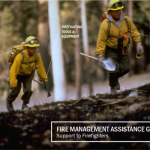OKLAHOMA CITY – As clean-up continues for homes, farms and businesses damaged by the May 5 through June 4 severe storms, flooding, straight-line winds, and tornadoes, Oklahomans should take special care when collecting and disposing of household hazardous wastes.
Homeowners and renters affected by the disaster should, whenever feasible, separate hazardous household waste from other debris before disposal. Among the items that fall into the household hazardous waste category are paints and solvents, cleaning materials, batteries, oils and petroleum products, pesticides, explosives, swimming pool chemicals and pressurized gas cylinders.
After separating out household hazardous waste, take the waste (or arrange for it to be taken) to a facility that accepts toxic materials. To find a facility that accepts household hazardous waste in your area, contact a local Department of Environmental Quality (DEQ) office. A list of DEQ offices is available at www.deq.state.ok.us/eclsnew/localOffices.htm.
Improper disposal of household hazardous waste includes pouring it down the drain, on the ground, into storm drains/sewers, or in some cases putting it out with the trash. The dangers of such disposal methods might not be immediately obvious. Certain types of household hazardous waste have the potential to cause physical injury to sanitation workers, contaminate septic tanks or wastewater treatment systems, and pose health hazards to both humans and animals.
Oil-contaminated debris or material tainted by other petroleum products should be segregated and stored in a well-ventilated area. If stored outdoors, household hazardous materials should be covered to keep precipitation from contaminating nearby soil and water.
For discarding all types of waste, the preferred option is disposal at a DEQ-permitted landfill. Contact a local DEQ office for the location of the nearest emergency disposal sites for storm debris. A list of local DEQ offices and landfills can be found at www.deq.state.ok.us/tornado/MunicipalitiesDebrisMgt.pdf
In addition to disposing of household hazardous wastes, it’s also important for residents to clean and disinfect everything touched by floodwaters as quickly as possible. That’s because floodwaters and their sediments may contain chemical and biological contaminants from sources as varied as garden chemicals, heating oil and sewage.
Residents should assume that anything touched by floodwater is contaminated and should be cleaned, disinfected or thrown away. Discard any household goods – such as wall coverings, rugs and furniture – that may be contaminated with mold and other toxins and can’t be disinfected. When in doubt, throw it out.
Businesses that may have been impacted by the storms of May 5 through June 4 and have questions about proper disposal of hazardous waste should contact a local DEQ office.
Oklahomans can find more information by calling their local DEQ office during normal business or checking out the DEQ website at http://www.deq.state.ok.us.
###
Disaster recovery assistance is available without regard to race, color, religion, nationality, sex, age, disability, English proficiency or economic status. If you or someone you know has been discriminated against, call FEMA toll-free at 800-621-FEMA (3362). For TTY call 800-462-7585.
The Oklahoma Department of Emergency Management (OEM) prepares for, responds to, recovers from and mitigates against emergencies and disasters. The department delivers services to Oklahoma cities, towns and counties through a network of more than 350 local emergency managers.
FEMA’s mission is to support our citizens and first responders to ensure that as a nation we work together to build, sustain, and improve our capability to prepare for, protect against, respond to, recover from, and mitigate all hazards. Follow us on Twitter at www.twitter.com/femaregion6 and the FEMA Blog at http://blog.fema.gov.
The SBA is the federal government’s primary source of money for the long-term rebuilding of disaster-damaged private property. SBA helps businesses of all sizes, private non-profit organizations, homeowners, and renters fund repairs or rebuilding efforts and cover the cost of replacing lost or disaster-damaged personal property. These disaster loans cover losses not fully compensated by insurance or other recoveries and do not duplicate benefits of other agencies or organizations. For more information, applicants may contact SBA’s Disaster Assistance Customer Service Center by calling (800) 659-2955, emailing disastercustomerservice@sba.gov, or visiting SBA’s website at www.sba.gov/disaster. Deaf and hard-of-hearing individuals may call (800) 877-8339.





